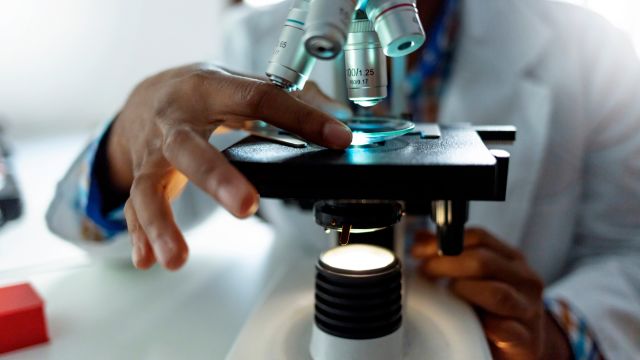Updated on May 1, 2024
A glioma is a type of tumor the develops from cells called glial cells, which surround, support, and protect nerve tissue. Much of the brain is comprised of glial cells, and glial cells are also found in the spinal cord and in the peripheral nervous system (the nerves outside of the brain and spinal cord). Most gliomas are brain tumors, though there are gliomas that begin in the glial cells of the spinal cord. Gliomas can also metastasize—or spread to the spine.
The most commonly reported symptom of gliomas are headaches, though symptoms can vary depending on the size and location of the tumor. Seizures are the second-most common symptom, and other symptoms can include nausea, vomiting, speech problems, changes in behavior, and altered mental states. These symptoms are caused by the tumor pressing against surrounding tissues and structures, such as nerves or blood vessels.
The size and location of a glioma and the overall health of the person being treated are important factors when a healthcare team is considering the best approach to treatment.
Another important factor when deciding on treatment is the grade.
What is the tumor grade?
Cancer cells originate from normal cells that have undergone genetic mutations or other changes, and as a result, have become abnormal in appearance and function. Grade refers to how abnormal a cancer cell appears compared to a normal cell. Grading is performed by studying a sample of the cancer under a microscope and looking for abnormalities.
- Cancer cells that look more like normal cells are given a lower grade. Low grade cancers are generally considered less aggressive, meaning that they grow and spread less quickly.
- Cancer cells are given a higher grade when they look more abnormal. High grade cancers are considered more aggressive, meaning that they grow more quickly and have a higher risk of spreading.
Tumors that begin in the brain and spinal cord, including gliomas, are assigned a grade on a scale of I to IV.
How are biopsies performed?
In order to grade a glioma, a healthcare team will need a sample of the tumor. The process of obtaining a sample and examining it under a microscope is called a biopsy. In many cases, a person with a glioma will have surgery to remove the tumor—or as much of the tumor as safely possible—as their first step in treatment. The tumor will then be sent for examination.
Sometimes surgery is not recommended. A tumor may be located in a part of the brain that cannot be safely reached by surgery, or it may be in a location where performing surgery would carry a high risk of damaging an important part of the brain.
If a healthcare team decides that surgery is not possible, they can use a procedure called a stereotactic needle biopsy to obtain a sample. During this procedure, a small hole is drilled into the skull and a needle is used to extract a sample from the tumor. Imaging tests are used to identify a location in the brain where a sample can be safely obtained. This procedure will be performed by a neurosurgeon, and the person undergoing the biopsy will be sedated.
Once a tumor has been biopsied, a healthcare team will recommend the next steps in treatment. Depending on the tumor grade and other factors, surgery may be followed by radiation therapy, chemotherapy, and/or targeted therapy.



